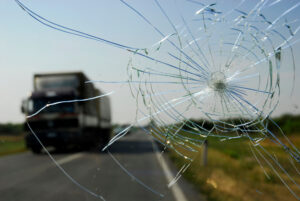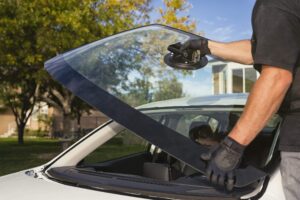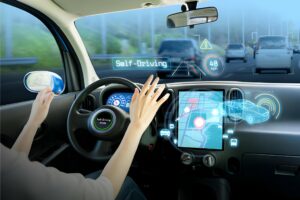Modern vehicles’ advanced driver assistance systems (ADAS) require camera calibration after windshield replacement. The camera’s position and orientation are calibrated following the windshield replacement. This process is started by parking the car on a level area and aligning the camera to manufacturer requirements with specialised equipment.
Adjusting focal length, angle, and distortion may improve performance. After windshield replacement, software modifications may be needed to fine-tune some camera settings. Professionals carefully calibrate the camera after windscreen repair to preserve the vehicle’s safety systems and guarantee dependable operation.
- Understanding Camera Systems
Cars utilize different camera types to enhance safety, including front, rear, and side cameras. These cameras function akin to electronic eyes, augmenting driver visibility for safer navigation.
Camera systems are pivotal for car safety, offering drivers an improved view of surroundings for easier parking and lane changes. Additionally, these systems provide alerts about obstacles, preventing accidents and ensuring road safety for all. Camera systems actively contribute to modern vehicle safety by aiding in precise manoeuvring and proactively detecting hazards.
- Ensuring Safety Through Precise Camera Calibration
A. Overview of ADAS features reliant on camera calibration
ADAS features such as departure warning and automatic emergency braking rely on to calibrate windshield camera for accurate operation. Calibration ensures these systems interpret their surroundings correctly.
B. Importance of precise calibration for safety systems
Precise calibration is essential for the effectiveness of safety systems. It enables accurate detection of obstacles and lane markings, enhancing collision prevention and passenger safety. Without precise calibration, the reliability of ADAS features may be compromised, posing potential risks on the road.
- Pre-Calibration Preparations
Professional calibration services ensure reliable and optimal results for your vehicle’s cameras before initiating the calibration process. They provide specialized expertise, ensuring precise and efficient calibration. Equipped with the necessary tools and equipment, they alleviate the burden of sourcing resources independently.
Professionals prioritize a level surface, which is vital for accurate calibration. Moreover, they meticulously clean the windshield and camera lens using industry-standard techniques and products to eliminate any contaminants. Entrusting pre-calibration to professionals guarantees that your vehicle’s camera systems are calibrated to the highest standard, enhancing safety and performance on the road with the utmost reliability.
- Calibration Procedures for Different Camera Systems
A. Lane Departure Warning Systems (LDWS)
Calibrating Lane Departure Warning Systems (LDWS) involves precise alignment to ensure accurate detection of lane markings. Professionals meticulously adjust the camera’s position and angle, allowing it to effectively recognize lane boundaries. This calibration process ensures that the LDWS functions reliably, alerting drivers if they unintentionally drift out of their lane.
B. Forward Collision Warning (FCW) Cameras
For Forward Collision Warning (FCW) cameras, calibration focuses on accurately determining the distance to objects in front of the vehicle. Technicians meticulously align the camera to ensure it accurately detects potential collisions. This calibration process enhances the FCW’s ability to alert drivers to impending collisions, providing vital safety warnings when necessary.
C. Adaptive Cruise Control (ACC) Cameras
Adjusting ACC cameras precisely measures the distance between the vehicle and others on the road for Adaptive Cruise Control. Professionals meticulously align the camera to ensure it accurately tracks the speed and position of surrounding vehicles. This process improves the ACC’s performance, helping it adjust the vehicle’s speed and keep a safe distance.
- Summarizing Camera Calibration Steps
When opting for commercial camera calibration services, skilled technicians first carefully locate your vehicle’s camera modules. They then access the calibration menu/interface and follow precise on-screen instructions for each step.
This careful method makes sure your car’s cameras work well and keep you safe while driving. Commercial services handle every detail with care, providing peace of mind.
Process of calibrating camera after windshield replacement can be summarized in the following points;
- Technicians carefully locate the camera module(s) in your vehicle.
- The calibration menu/interface is expertly accessed and navigated.
- Each calibration step is executed meticulously.
- Commercial services ensure every detail is handled with care.
- Trust in precision, efficiency, and confidence in your vehicle’s safety features provided by experienced professionals.
- Post-Calibration Checks and Verifications
After finishing the calibration, experts do thorough checks. They test the cameras in different conditions, like light and weather, to ensure they work well. They also use tools to confirm the calibration matches the maker’s standards.
If something goes wrong, they fix it quickly. This makes sure that all of your car’s safety features work properly. With these checks, you can be sure that trusted services will keep you safe on the road.
- Troubleshooting and Further Assistance
After calibrating the camera, a test drive is needed to check if it’s accurate. Professionals drive the car and see how well the camera works in real situations.
They make sure it sees obstacles and lane lines correctly. If there are problems, they know how to fix them. You can trust them to make sure your camera works well when you’re driving.
- Professional Camera Calibration: Why It Matters
In car fixing, making sure the camera is calibrated perfectly is really important. At Speedy Windshield Repair, we know just how vital it is.
Capturing every detail impeccably elevates the safety and quality of our repairs. Accurate alignment of systems like ADAS is paramount for optimal performance. Speedy Windshield Repair guarantees executing every job with the utmost precision and excellence through our steadfast commitment to professional camera calibration.
Final Thoughts
After replacing the windshield, it’s important to calibrate the camera to make sure your car’s ADAS functions correctly. When the camera follows the manufacturer’s guidelines and is properly focused and angled without any distortion, driving becomes safer. Having professionals take care of this ensures precise ADAS Calibration, thorough inspections, and assistance in case of any issues. With their expertise, you can rely on your safety equipment to function effectively under any circumstances.



